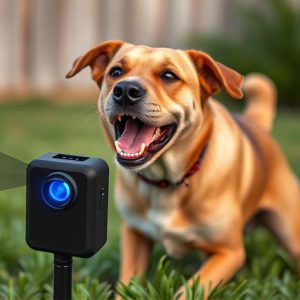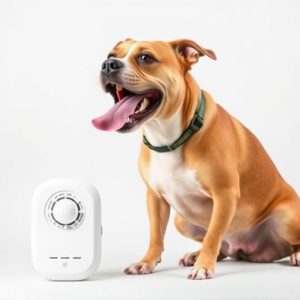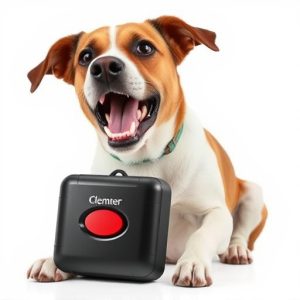Personal Protection Against Aggressive Dogs: Tools, Training & Prevention
Understanding aggressive dog behavior is crucial for personal safety, especially when encountering u…….
Understanding aggressive dog behavior is crucial for personal safety, especially when encountering unfamiliar dogs. Recognize warning signs and know that factors like fear, territoriality, pain, food guarding, or past trauma can trigger aggression. As a last resort, handheld dog deterrents like pepper spray, air horns, or electronic devices can be used to startle the dog and escape safely. Choosing the right deterrent involves considering ease of use, range, weather resistance, and specific needs. Legal regulations vary across jurisdictions, so research local rules before employing these devices. Secure carrying methods using holsters, clips, or pouches ensure easy accessibility during threats. Proactive measures include understanding dog behavior, education, training, regular socialization, and securing outdoor spaces to prevent aggression.
Personal safety against aggressive dogs is paramount, especially as encounters become increasingly common. This comprehensive guide explores effective strategies for personal protection, focusing on handheld dog deterrents and carrying methods. We delve into understanding aggressive behavior, exploring signs and causes, and the legal framework surrounding these devices. Learn about different types of deterrents, their effectiveness, and best practices for safe carrying. Additionally, discover training and prevention techniques to enhance your safety and that of your loved ones in areas prone to dog interactions.
- Understanding Aggressive Dog Behavior: Signs and Causes
- Choosing the Right Handheld Dog Deterrent: Types and Effectiveness
- Legal Considerations: Regulations on Dog Deterrents and Their Use
- Safe Carrying Methods for Personal Protection Against Dogs
- Training and Prevention Strategies: Preparing Yourself and Your Environment
Understanding Aggressive Dog Behavior: Signs and Causes
Understanding aggressive dog behavior is crucial for personal protection, especially when encountering unfamiliar dogs. Recognizing the signs and causes can help individuals navigate potentially dangerous situations more effectively. Aggressive dogs often display specific cues before attacking, such as growling, snarling, elevated hackles (fur along the back), or a stiff body posture. These behaviors serve as warnings and should be taken seriously.
Various factors contribute to a dog’s aggression, including fear, territoriality, pain or discomfort, food guarding, and past traumatic experiences. Handheld Dog Deterrent Carrying Methods can be employed as a last resort when facing an aggressive dog. Tools like pepper spray, air horns, or electronic deterrents are designed to startle the dog, providing time for a safe escape. However, it’s essential to use these methods responsibly and only when other de-escalation techniques have failed.
Choosing the Right Handheld Dog Deterrent: Types and Effectiveness
When considering personal protection against aggressive dogs, selecting the appropriate handheld dog deterrent is a key step. These devices are designed to scare or deter dogs without causing harm, and come in various types, each with its own advantages and carrying methods. Spray-based deterrents, for instance, are popular due to their ease of use—just spray towards the dog when it approaches. They’re effective for immediate threat scenarios but require timely deployment. Alternatively, sound devices emit high-frequency sounds that are unpleasant to dogs, suitable for less urgent situations as they offer a non-spray deterrent option.
The carrying methods also vary, with some devices featuring holsters or clips for easy accessibility during outdoor activities like hiking or running. Others come in compact sizes that can be stored in pockets or bags, ensuring you have it ready when needed. When choosing, consider factors like ease of use, range, weather resistance, and the specific situations you’ll need protection in—all these will help determine the best handheld dog deterrent for your personal safety needs.
Legal Considerations: Regulations on Dog Deterrents and Their Use
When considering personal protection against aggressive dogs, it’s crucial to understand legal considerations and regulations surrounding dog deterrents. The use of handheld devices designed to stop or scare off dogs varies significantly across jurisdictions. Some areas have strict restrictions on the carrying and deployment of such tools, while others may allow them under specific conditions.
Handheld dog deterrents, including spray and electronic devices, are subject to varying laws and regulations. Carrying methods for these deterrents must adhere to local guidelines, ensuring public safety and responsible use. It’s essential to research and comply with regional rules to legally possess and employ dog deterrents when facing potential threats.
Safe Carrying Methods for Personal Protection Against Dogs
When it comes to personal protection against aggressive dogs, one of the most effective tools is a handheld dog deterrent. These devices come in various forms, such as spray cans and electronic shock collars, each designed for different needs and situations. The key to their effectiveness lies in safe carrying methods.
For instance, when carrying a spray can, it’s crucial to keep it easily accessible yet secure. Holsters specifically designed for this purpose allow you to carry the can safely without compromising your grip, ensuring its readiness for use when needed. Similarly, electronic shock collars require careful handling and regular testing to ensure they function correctly. Storing them in a dedicated pouch or case not only keeps them organized but also protects the device from damage, maintaining their performance over time. These carrying methods are essential for ensuring your safety and preparedness when facing potential dog threats.
Training and Prevention Strategies: Preparing Yourself and Your Environment
When it comes to personal protection from aggressive dogs, prevention is key. Training and implementing effective strategies can significantly reduce the risk of encounters and potential harm. Start by educating yourself about dog behavior and body language; understanding a dog’s signals can help you avoid triggering aggression. Teach children how to interact with dogs safely, promoting respect and gentle handling. Regularly socialize your own pets, exposing them to various environments and other animals to ensure they remain well-adjusted and less prone to fear-based reactions.
In terms of practical preparation, consider adopting handheld dog deterrents as a carrying method. Spraying devices or electronic collars can be effective tools when used responsibly and according to local regulations. Ensure you familiarize yourself with the proper usage and safety guidelines associated with these methods. Additionally, keep your environment secure by ensuring fences are in good repair and any potential hiding spots for stray dogs are minimized. Regularly check and maintain these measures to create a safer outdoor space.
When it comes to personal protection from aggressive dogs, a multi-faceted approach is key. By understanding aggressive dog behavior, choosing the right handheld dog deterrent, adhering to legal considerations, and implementing safe carrying methods, you can significantly enhance your safety. Additionally, training and prevention strategies tailored to your environment are indispensable in mitigating potential risks. Equip yourself with knowledge and tools to navigate encounters confidently and securely. Always remember, preparation is the best defense.


